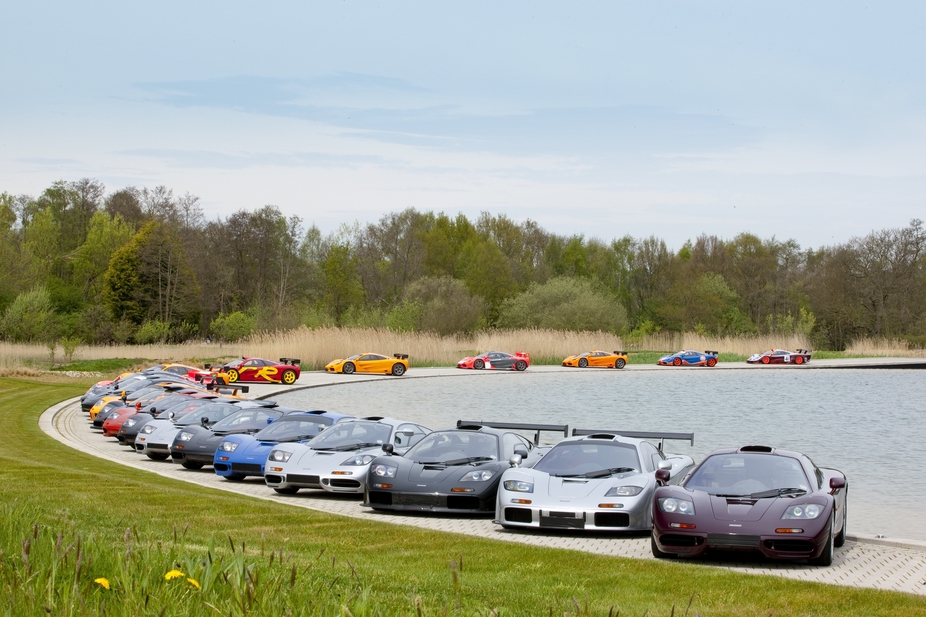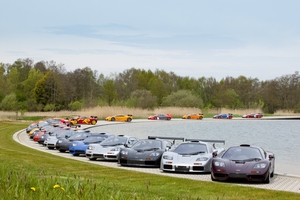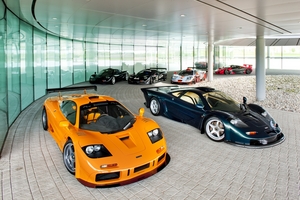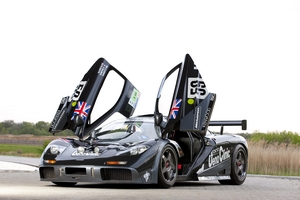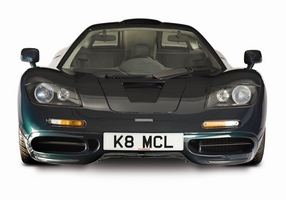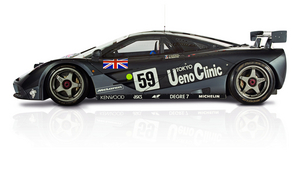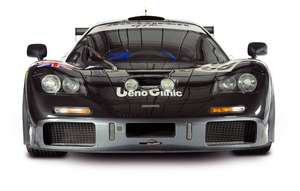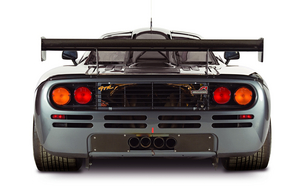|
Send this page to a friend! Fill in the form bellow | ||
news
20 Years of Perfection: the McLaren F1
20 years ago, the McLaren F1 McLaren F1United Kingdom, 1992 > 19986 versions
McLaren F1United Kingdom, 1992 > 19986 versions
21 photos
went on sale and revolutionized the super car market. The car immediately became a benchmark against which all sports cars were judged both in terms of performance and price.
The concept for the F1 came from Formula 1 designer Gordon Murray who convinced McLaren McLarenUnited Kingdom, 1963 > present92 models
McLarenUnited Kingdom, 1963 > present92 models
1883 photos
12 videos
boss Ron Dennis to back the project. The exterior design was by Peter Stevens who had previously penned the Jaguar XJR-15 Jaguar XJR-15United Kingdom, 1990 > 19921 photo
Jaguar XJR-15United Kingdom, 1990 > 19921 photo
and redesigned Lotus Esprit Lotus Esprit Gen.4United Kingdom, 1987 > 199611 versions
Lotus Esprit Gen.4United Kingdom, 1987 > 199611 versions
10 photos
.
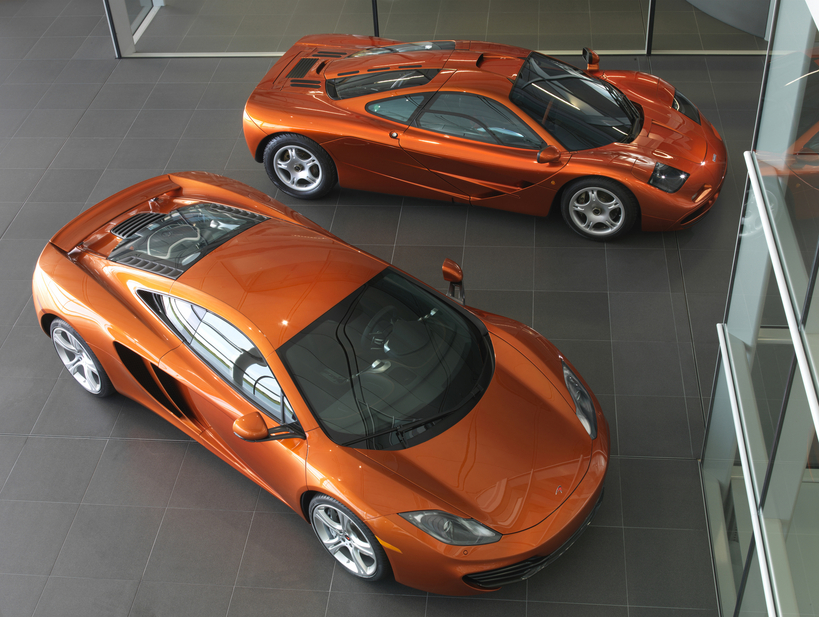
The F1 poses with its younger brother the MP4-12C
Murray incorporated cutting-edge materials for the time including gold foil, titanium, carbon fiber, and kevlar. It was the first production car to use a carbon fiber monocoque. At the time the car was built, McLaren had used Honda HondaJapan, 1948 > present102 models
HondaJapan, 1948 > present102 models
2419 photos
10 videos
engines in its Formula 1 cars. It was building its own super car at the time – the NSX Honda NSXJapan, 1990 > present1 photo
Honda NSXJapan, 1990 > present1 photo
1 video
. While the NSX could never compete with the F1 McLaren F1United Kingdom, 1992 > present7 photos
McLaren F1United Kingdom, 1992 > present7 photos
in terms of performance, Murray had wanted them to build a 550hp that was 600mm long with a total weight of 250kg for the engine for the F1, but it was busy with the V6 for the NSX already. Murray knew the NSX's V6 would not have enough power and moved to BMW BMWGermany, 1918 > present87 models
BMWGermany, 1918 > present87 models
8471 photos
43 videos
.
Murray turned to Paul Roche who was the head of BMW's M division. The two men knew each other from when BMW supplied engines to the Brabham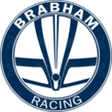 BrabhamUnited Kingdom, 1959 > 199116 models
BrabhamUnited Kingdom, 1959 > 199116 models
20 photos
1 video
Formula 1 team, and Murray designed the car. M was able to produce an engine that more than met Murray's specifications. The 6.1 liter, 48-valve V12 produced 618hp, 14% more than Murray wanted, weighed 266kg, 16kg more than Murray wanted, and was 600mm long, exactly on spec. Because the carbon fiber monocoque insulated heat, the engine bay was lined with 16g of gold foil to reflect it away worth about $3500 at the time. There were also two fans on either side of the engine that sucked cool air into the engine bay for even more cooling.
The original production concept had mirrors mounted mid-way up the A-pillar and lacked turn signals. For the production model, the mirrors were moved back down to the base of the A-pillar, and turn signals were added below the headlights.
When it was finally released, the F1 was the fastest, quickest car ever produced. It had a 231mph top speed. The weight was 100kg higher than Murray originally wanted at 1100kg. The fat mostly came from the cars steel disc brakes that added 18kg. Murray had wanted carbon discs, but the technology was not available at the time to make them work well at low temperatures. Do not let anyone fool you, the F1 did have at least one luxury feature. Kenwood created a bespoke CD player for the car that weighed half as much as a standard unit and could take 1.5g without skipping.
The F1 was built in two pieces. The carbon fiber monocoque was put together in Guildford and totally completed with paint. It was then sent to Woking for all of the mechanical parts to be installed.
Still, when it was released the F1 was not perfect. Early reviewers complained about the heavy clutch and difficult driving position. Getting into the car and getting out has always been a problem. Road & Track tested F1s in the US and in Europe. While they had no mechanical problems in Europe, while driving in Texas the car repeatedly overheated. It just could not cope with the high ambient temperatures.
The other problem with the F1 affected only one small group- Americans. The F1 was never really meant to be sold in the US, and therefore if any Americans wanted one they had to jump through all kinds of hoops to get one. Buyers ordered their car from McLaren and had to have it shipped to Connecticut where it would be federalized. Just adding all of the equipment and dealing with shipping and taxes made the car cost $1,131,120. US laws required the addition of US-spec headlights and turn signals. Plus, the buyer had to pay the official US importer Ameritech for performing the work. If any service every had to be done, the car would have to be shipped to BMW of America's headquarters in New Jersey. Six F1s were eventually sold there.
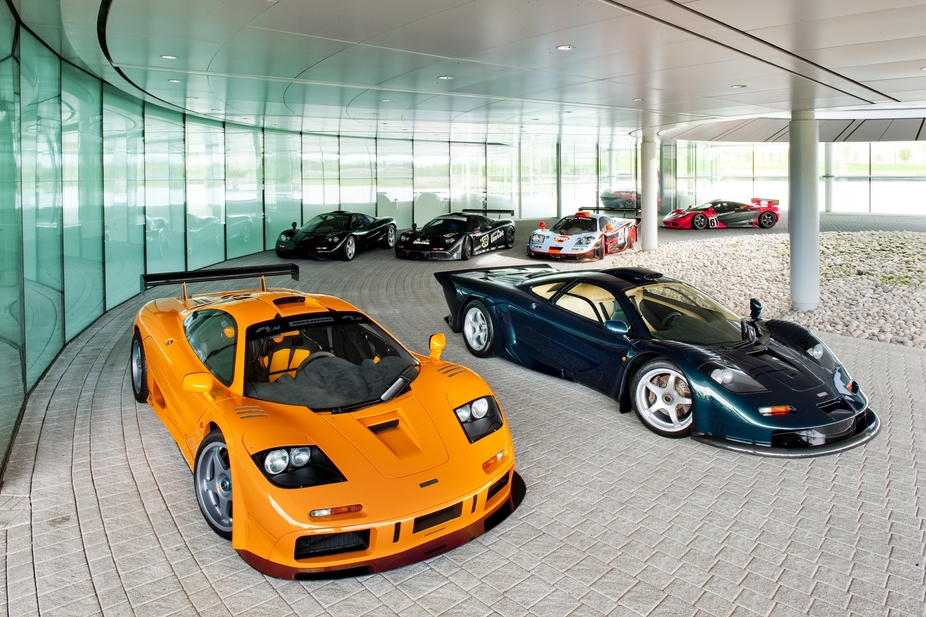
The LM with the long tail and racing cars
"The satisfying thing for the little team of people that were involved is that 10 years later the might of Ferrari is still trying like crazy to beat this little company in Woking [England]. I thought they of all people would bring out something instantly that would eclipse us. You never see a Ferrari article that doesn't mention the McLaren F1, which is fantastic. It's not just about pure performance, it's driver satisfaction. We didn't set out to build the most expensive car or even the fastest car. We just set out to build the best driver's sports car around,” said Gordon Murray in an interview with Road & Track magazine in December 2002.
After the F1 was completed, Murray and McLaren were not done yet. There were two further evolutions of the car – the F1 LM McLaren F1 LMUnited Kingdom, 1995 > present4 photos
McLaren F1 LMUnited Kingdom, 1995 > present4 photos
and F1 GTR McLaren F1 GTRUnited Kingdom, 1995 > present5 photos
McLaren F1 GTRUnited Kingdom, 1995 > present5 photos
.
The GTR was the racing version of the F1, and it debuted in 1995. For the first season, it raced in the BPR Global GT Series. The series only lasted for three years from 1994 to 1996, but the McLaren won the championship in 1995 and 1996. The GTR also won overall the 24 Hours of Le Mans in 1995. For 1996, it finished fourth, fifth and sixth overall at Le Mans. It came back in 1997 to be second and third overall at Le Mans, and it was fourth in 1998. The F1 continued to be successful regionally and raced in the Japanese GT Championship in 1996 when it took the class title and from 2000 to 2002. McLaren built a total of 28 GTRs, and several were converted back to road cars after racing.
The final F1 variant was the LM, which stood for Le Mans. The cars were built starting at the end of 1995 to celebrate the brand's Le Mans victory. Only five were built for each car that finished at Le Mans. Power was boosted to 680hp and weight feel to 1062kg. All were painted Papaya Orange for the favorite color of Bruce McLaren on his race cars. Due to Le Mans regulations, the LM was actually lighter and more powerful than the car that had won at Le Mans. The aerodynamic enhancements provided extra downforce but dropped the top speed to 225mph.
“The car's racing success took even the great motorsport brain of Ron Dennis entirely by surprise, and provoked him into building what is effectively a high-speed, road-going trophy of that Le Mans victory,” said Car Magazine about the LM in 1999.
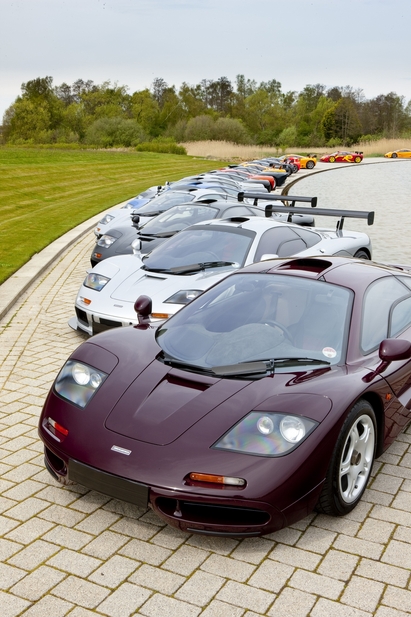
The F1 roadcars come together at the McLaren headquarters in Woking
And then it was all over, McLaren built 106 F1s including racing versions and the LMs. Even after completing the production run, McLaren continued to service the cars. It equipped every car with a modem that could be connected to the factory for diagnostics, and it continues to service the cars long since production has stopped.
"We believe the car will last forever. There is no reason why it shouldn't. Nobody's going to throw one away. They're not going to corrode. Therefore, we would expect them to be around for 50 years, a hundred years, whatever,” said Harold Dermott of McLaren to Autoweek on May 10, 1999.
McLaren did not work on another roadcar until the Mercedes SLR![SLR-Class Gen.1 [C 199] SLR-Class Gen.1 [C 199]](/img/series/68/mercedes_benz_slr_class_sqr112_2368.jpg) Mercedes-Benz SLR-Class Gen.1 [C 199]Germany, 2003 > 20094 versions
Mercedes-Benz SLR-Class Gen.1 [C 199]Germany, 2003 > 20094 versions
52 photos
1 video
that was announced in 1999 but did not go on sale until 2003. Compared to the icon that was the F1, the SLR always paled in comparison.
Since then, it has developed its own car again, the MP4-12C McLaren MP4-12CUnited Kingdom, 2011 > 20006 photos
McLaren MP4-12CUnited Kingdom, 2011 > 20006 photos
2 videos
. It competes more with a Ferrari 458 Ferrari 458 ItaliaItaly, 2009 > present676 photos
Ferrari 458 ItaliaItaly, 2009 > present676 photos
2 videos
than the hypercars that the F1 did, but one year into sales it seems to be doing well, and there are rumors that McLaren is working on a significantly more powerful car to carry on the legacy of the F1.
Source: Road & Track November 1994, Car and Driver August 1994, Road & Track December 1997, Autoweek May 10 1999, Car December 1999
Encyclopedia | Engine V 12 ( 60.0º vee) Displacement 370 cu in Top Speed 240 mph Transmission 6, Manual Maximum power 627 hp @ 7500 rpm Type Fixed-head coupé Fuel Petrol Fuel consumption (combined) 10.36 US MPG | price -- annual ownership cost $ 3.184 |
2 comments
more
Contribute
more about McLaren



latest news




